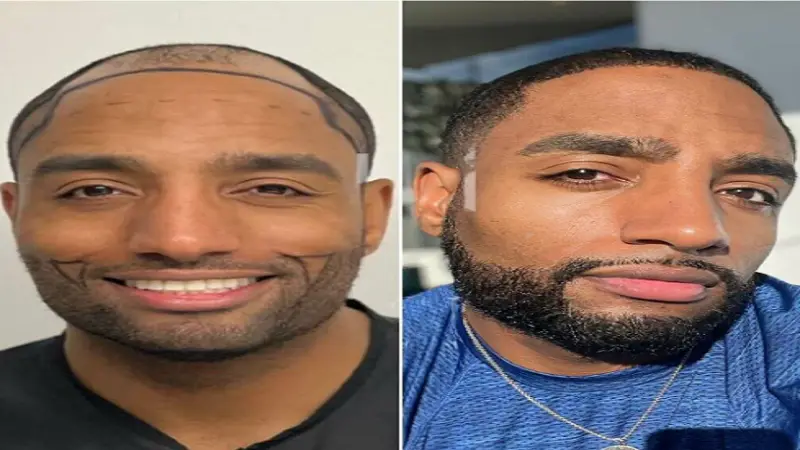Afro-hair transplants are a great option for people with afro-textured hair who experience hair loss. These procedures are designed to restore natural-looking hair growth while maintaining the unique curl pattern of afro hair. If you’re wondering whether this treatment is right for you, this article will guide you through everything you need to know.
What Are Afro Hair Transplants?
Afro hair transplants are a specialized procedure that moves hair follicles from a donor area, usually at the back of the head, to areas with thinning or no hair. This method ensures that the transplanted hair blends naturally with your existing hair.
Common Techniques Used:
- Follicular Unit Extraction (FUE): Individual hair follicles are extracted and transplanted.
- Follicular Unit Transplantation (FUT): A strip of the scalp is removed, and follicles are taken from it.
Both techniques are tailored to preserve the curl and thickness of afro-textured hair.
Who Needs These Transplants?
Hair loss can affect anyone, and Afro-textured hair has its unique challenges. This Transplants is ideal for:
- Men and women with thinning hair or bald spots.
- People with traction alopecia are caused by tight hairstyles.
- Those with hairline recession or male/female pattern baldness.
How Do Afro Transplants Work?
The process involves three main steps:
- Consultation: A specialist examines your hair and scalp to determine the best approach.
- Harvesting Donor Hair: Healthy hair follicles are extracted from a donor area.
- Transplanting: The follicles are carefully implanted into the thinning or bald areas, ensuring they follow the natural curl pattern.
FUE vs. FUT: Which Technique Is Best for Afro Hair?
FUE (Follicular Unit Extraction):
- Less scarring compared to FUT.
- Suitable for small to medium hair loss.
FUT (Follicular Unit Transplantation):
- Best for larger areas of hair loss.
- Leaves a thin scar that is usually hidden under hair.
Your surgeon will recommend the best option based on your hair type and goals.
Benefits of Afro Hair Transplants
This hair transplants offer several advantages:
- Natural Results: The curl and thickness are preserved.
- Permanent Solution: Once transplanted, the hair grows naturally for life.
- Boosts Confidence: Restoring hair can improve your overall appearance and self-esteem.
Challenges of Transplanting Afro-Textured Hair
While they are effective, they come with unique challenges:
- Curl Pattern: The hair follicle’s curl continues below the skin, making extraction more complex.
- Specialized Expertise: Only skilled surgeons experienced with afro-textured hair can achieve the best results.
- Donor Hair Availability: The amount of healthy donor hair can affect the success of the procedure.
Are You a Good Candidate for Afro Hair Transplants?
Afro hair transplants may be right for you if:
- You have healthy donor hair.
- You’re in good overall health.
- You’re realistic about the results.
If you’re unsure, consult a hair transplant specialist to assess your eligibility.
Things to Consider Before Your Procedure
Before deciding on a hair transplant, keep the following in mind:
- Choose a clinic with experience in afro transplants.
- Understand the cost and financing options.
- Follow pre-surgery guidelines provided by your surgeon.
Recovery and Aftercare for Afro Hair Transplants
After the procedure, proper aftercare is essential for success:
- Avoid washing your hair for the first few days.
- Use only the prescribed shampoo and products.
- Protect your scalp from direct sunlight.
- Avoid tight hairstyles during the recovery period.
Results: What to Expect After the Transplant
Most people start noticing hair growth within 3-6 months. Full results are typically visible after 12-18 months. The transplanted hair will grow naturally and blend with your existing hair.
Frequently Asked Questions About Afro Hair Transplants
1. Is the procedure painful?
The surgery is performed under local anesthesia, so you won’t feel pain. Some discomfort may occur during recovery.
2. How long does the procedure take?
The procedure usually takes 6-8 hours, depending on the area being treated.
3. Are the results permanent?
Yes, the transplanted hair is permanent and will continue to grow naturally.
4. Can I style my hair after the transplant?
Yes, once the hair has fully grown, you can style it as you like.
See More:https://healthblogging.org/



